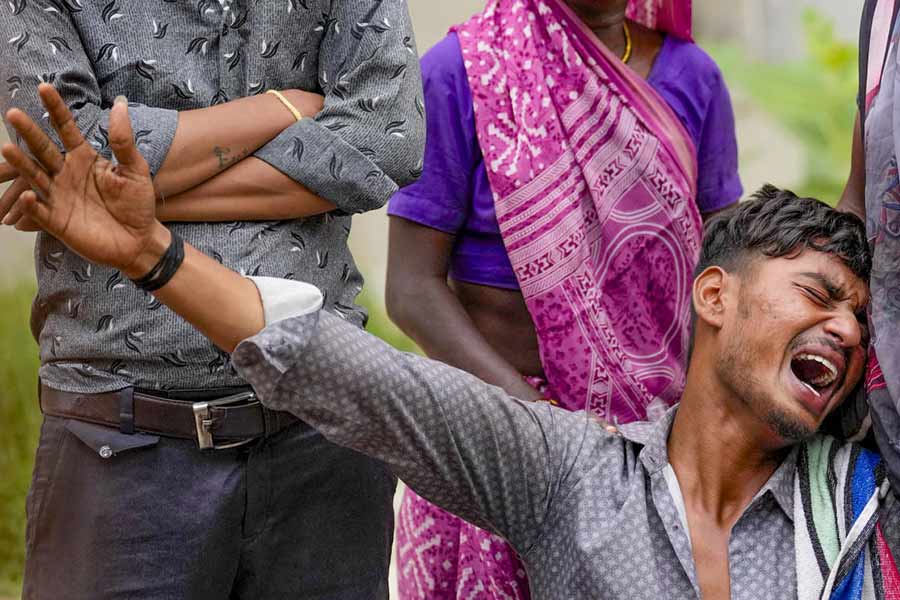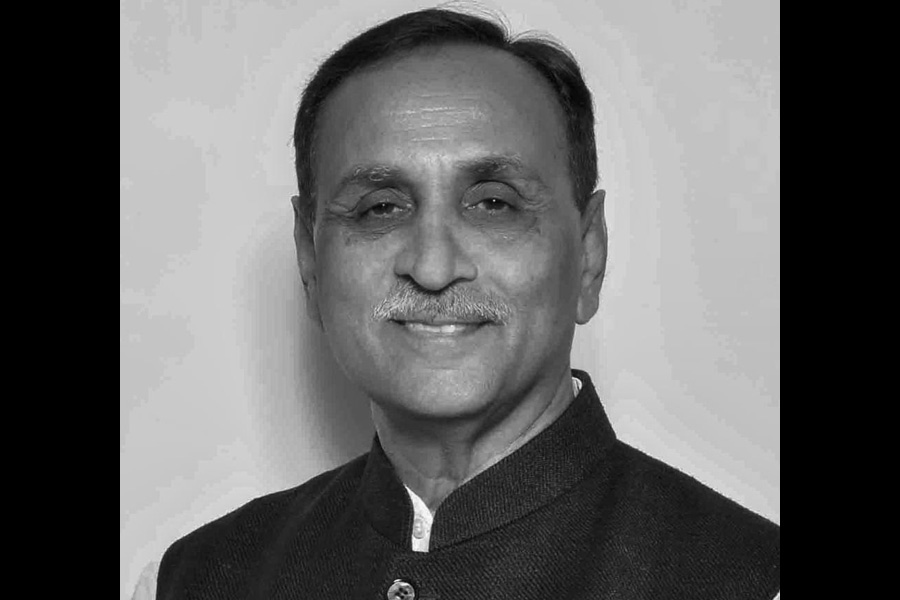 |
| Rajasaurus at the Indian Museum. Picture by Pabitra Das |
The last day of March at the Indian Museum was the tale of an entry and an exit. After a 38-year affair with the museum — the last eight spent as its director — Shyamalkanti Chakravarti bid goodbye on Wednesday. Also on Wednesday, a real ‘old timer’ — reconstructed at that — came to stay at 27 Jawaharlal Nehru Road.
On display as the ‘exhibit of the month’, starting March 31, is Rajasaurus narmadensis, or at least 70 per cent of its skull. Rajasauras is “India’s first dinosaur”, which inhabited the shores of the Narmada 6.7 crore years ago. It was christened Rajasaurus for the crown of double-crested horns on its head, with narmadensis suffixed for its “inhabitancy proximity” to the river.
Managing to bring the exhibit to the museum was Chakravarti’s parting gift to his destination for decades. “When we got to know towards the end of February that the Geological Survey of India (GSI) was keen to display some of its finds, we immediately requested them to let us be the first to display the skull,” said Chakravarti, who considers it “a must-see for Calcuttans”.
For the whole of April, Rajasaurus will be the centre of attraction, as it was on Wednesday morning, with every visitor stopping to gaze and gape at the museum’s latest inhabitant. Rajasaurus will later move to a permanent display corner in the museum, which will have detailed information, with “recreation of its ambience and eco-system”, Jurassic Park style.
The skull on display is a near-complete reconstruction of actual fossil material excavated from a cement quarry at Rahioli, in Kheda district, Gujarat, in 1981, with bits and pieces from another site in Madhya Pradesh. Two GSI geologists chanced upon workers of a cement quarry who had found curious “smooth, ball-like limestone objects” at a certain level of the limestone bed. These were dinosaur eggs.
The limestone bed also generated an assortment of bone fossils that could be assigned to dinosaurs. Research continued through the 80s and 90s on fossils collected from a suitable site in the field. To study the whole collection, which apparently contained the major part of the skeleton of at least one dinosaur, more scholars joined the project over the years, including two American scientists in 2001.
The final result was Rajasaurus. Scholars have marked it down as a carnivorous abelisaurid (theropod) dinosaur, measuring nine metres in length and three metres in height. Rajasaurus lived in the Indian peninsula when Gondwanaland had broken and the Indian landmass drifted northwards. According to scholars, Rajasaurus was probably a contemporary of Tyrannosaurus Rex of the North American continent. The two never met.











